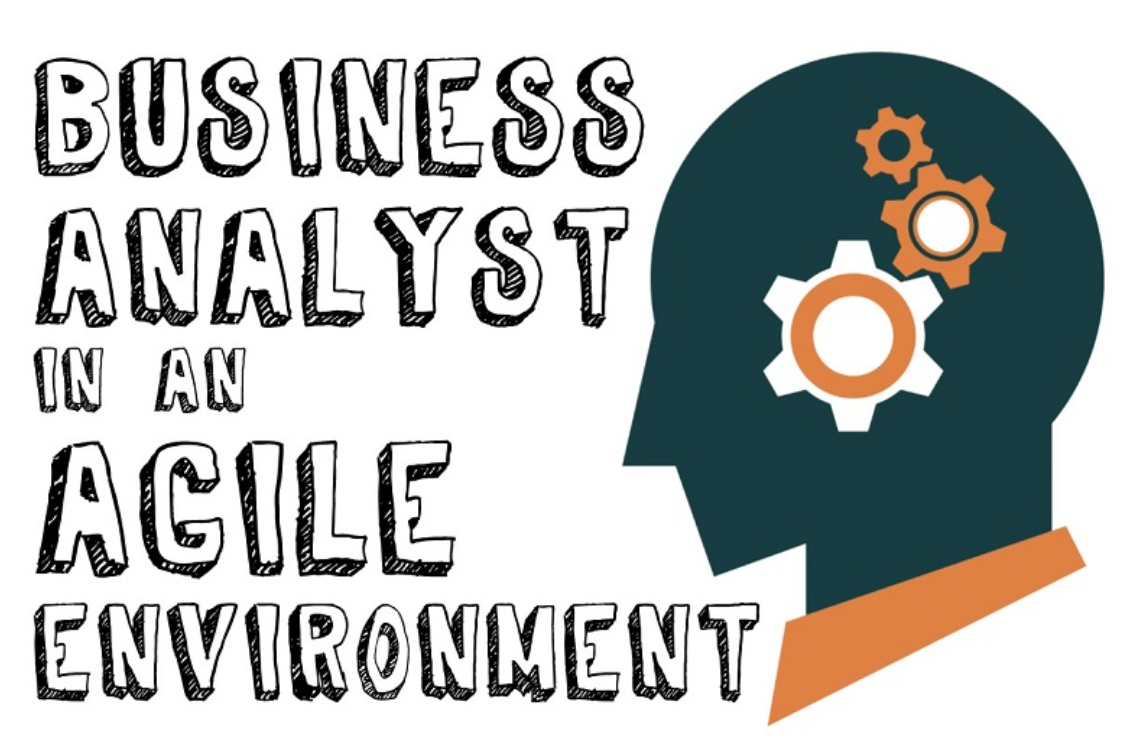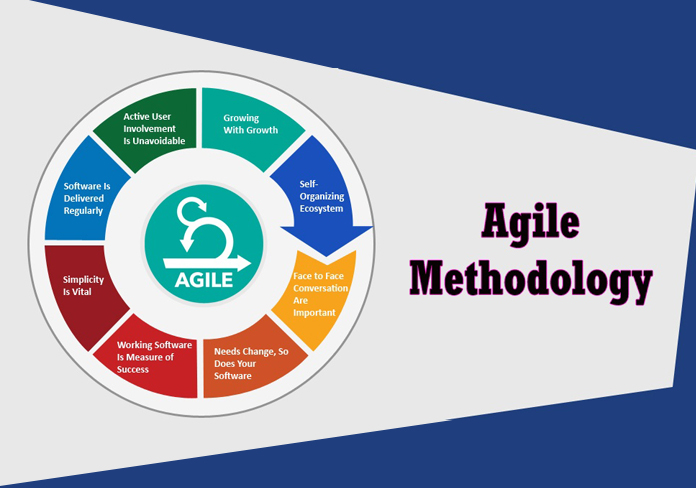This article was published as a part of the Data Science Blogathon

Making a switch from the traditional approaches to Agile methods can challenging for business analysts. Although there are plenty of resources available to support Agile teams, there are limited resources to guide Business Analysts to make a smooth transition to an agile environment.
There are highly likely chances that integrating the Agile process may imply specific changes to a business analyst’s day-to-day functions and responsibilities.
Before we move on to the next part, let us first understand what agile methodology is?
What is Agile Methodology?
The Agile methodology is a process to manage a particular project by breaking it into several phases. Once the project is initiated, teams cycle through a process of planning, executing, and evaluating. Continuous collaboration is vital, both with team members and project stakeholders.
Being an Agile BA is mainly about the following things:
- facilitating dialogue about customer value with the team,
- making the product owner’s decisions more efficient,
- Furthermore, analyzing for gaps and impacts.
In agile methodology, we focus on the value provided to the end-users more than anything else. At the end of the project completion, the end-users should be satisfied with the product they envisioned in the first go.
Although one of the critical roles of the BAs is to create documentation that is needed to capture the requirements and the process flow of the entire project, the role of an agile business analyst is slightly different. Their primary role is to facilitate dialogues and ensure that the development team understands the client requirements correctly to avoid confusion later. Hence, the BA generates dialogue that facilitates value-driven decision-making and prioritizes as per the current requirements.
A Business Analyst also analyzes the product owner’s priorities and works effectively to decompose them into smaller pieces. Now, these pieces deliver value to the customer and are small enough for the team to estimate the work accurately.
How does the Agile Manifesto apply to a Business Analyst

The Agile Manifesto is a document that sets out the fundamental values and principles behind the Agile philosophy and serves to help development teams work more efficiently and sustainably.
The Agile Manifesto comprises of four values and 12 principles that Agile teams strive to be indeed agile.
Four Values of Agile Manifesto
1. Individuals and interactions over processes and tools
2. Working software over comprehensive documentation
3. Customer collaboration over contract negotiation
4. Responding to change over following a plan
Individuals and interactions over processes and tools: As a BA, we should focus on F2F interactions over following protocols and processes.
Agile BAs use high-impact collaboration techniques to analyze business requirements. While processes and tools come in handy at times, we want the interactions with the team to drive needs.
Working software over comprehensive documentation: For BAs, this can be a tough one. This value ensures we focus on getting feedback associated with the existing software rather than feedback on a document. Requirements will evolve faster and more accurately when our customers and users get their eyes and hands-on working software. Our role is not about documenting but about facilitating value to customers and users.
Customer collaboration over contract negotiation: This is all about understanding, as a team, that contracts and agreements need to be flexible given our ever-changing environments. We need to focus on collaborating rather than requirements documents and contracts. Shared understanding through dialogue will result in better products over a focus on creating a document for requirements. We embrace the changing needs as we learn more about what we are building in a changing context.
Responding to change over following a plan: We still plan in Agile, but we plan differently. We plan in value increments instead of big, task-based Gantt charts. This value means we plan based on outcomes rather than schedule and tests. We work with a dedicated team to deliver a small piece of value in a short amount of time. A detailed plan is not needed to keep track of such a small scope with such an intense focus. However, details of what is valuable are required. We also plan longer-term in Agile; we plan with a vision, a product road map, and release plans.
12 Principles of the Agile Manifesto
The 12 Principles of the Agile Manifesto bring clarity to what being agile means. It talks about being agile in our behaviors and mindset. The principles do not discuss the BA role specifically, but they are still significant for the business analyst roles & responsibilities.
Principles of Agile Manifesto:
- Satisfying Customers Through Early & Continuous Delivery
- Welcome changing requirements, even late in development. Agile processes harness change for the customer’s competitive advantage.
- Deliver working software frequently, from a couple of weeks to a couple of months, with a preference for the shorter timescale.
- Business people and developers must work together daily throughout the project.
- Build projects around motivated individuals. Give them the environment and support they need, and trust them to get the job done.
- The most efficient and effective method of conveying information to and within a development team is face-to-face conversation.
- Working software is the primary measure of progress.
- Agile processes promote sustainable development. The sponsors, developers, and users should be able to maintain a constant pace indefinitely.
- Continuous attention to technical excellence and good design enhances agility.
- Simplicity–the art of maximizing the amount of work not done–is essential.
- The best architectures, requirements, and designs emerge from self-organizing teams.
- At regular intervals, the team reflects on becoming more effective, then tunes and adjusts its behavior accordingly.
These principles provide Business Analysts guidance on how to demonstrate the Agile values.
Role of an Agile Business Analyst as A Business Advisor
In an agile environment, the product owner is the ultimate decision-maker who sets the product vision and is responsible for understanding the business needs of the stakeholders. On the other hand, the business analyst may not have the ultimate decision-making authority. However, they become an essential part of the team by helping the product owner by helping them analyze the business domain, stocking, and grooming the product backlog.
How does an Agile Business Analyst Analyze Business Domain?
The business analyst aims to help the agile team and product owner analyze the business domain thoroughly and answer their questions to help them understand the business process. They help the team in understanding the business by finding relevant answers to the following questions:
- What processes need to be revised, deleted, or added?
- Which stakeholders are essential in making the business decisions?
- What information do we need to derive from initiating the project and running the project smoothly?
How does a Business Analyst Stock the Product Backlog?
Stocking the product backlog essentially means that we need to establish a list of user stories that will represent the project’s scope. A user story is a process that explains the features necessary to either the user or the customers of the end product. Business analysts support the product owner in deriving stories from the models that are created during domain analysis.
How does a Business Analyst Grooms Product Backlog?
Business analysts help the team groom the product backlog by understanding the purpose, prioritizing the stories, organizing the stories en and ensuring a complete description of the solution.
Role of a Business Analyst as A Business Coach:
At a certain point, business analysts also work as business coaches for the agile team. They interact with the team acting as the analytics specialist during the iterative processes. Some of the activities performed by a business analyst involve facilitating collaboration, generating examples, transferring knowledge, and becoming a great team member:
Facilitating Collaboration
To ensure successful project completion, the Business analyst ensures that collaboration between the teams & the stakeholders is carried out. Business analysts act as a language coach between the teams and the stakeholders by facilitating collaboration between them. As a BA, they have the most precise understanding of which stakeholders are actively involved in the project and who has the appropriate information for a particular topic. Hence, they can guide the teams to fetch information from the right stakeholder.
Generating Examples
Examples are a great way to remember the correct information discussed during conversations. They often include information such as who will deliver the user story and how to find out the right to deliver the user story.
Some good questions that teams ask when generating examples include:
- How to verify if the user story is implemented correctly?
- How to test if the team delivered the user story?
- Are there any cases with this user story that the team could not identify how the system should behave?
Transferring Knowledge
The most effective way to transfer all the relevant information to the team is by involving them in the business domain analysis and the stocking and grooming of the backlog. As the product owners and business analysts are majorly responsible for gathering all the correct information from the stakeholders during the project initiation phase, they can transfer the information to the team members to help them build an effective product.
Role of Agile Business Analyst in Documenting the Processes
Even though the focus of an Agile BA is not documenting so something can be handed off, documentation is still an essential role of a BA in an agile environment. Agile documentation serves the team as a conversation igniter or a memory of a conversation—agile BAs partner closely with the product owner to determine what is valuable. The product owner makes critical decisions about the project. The BA works as a business advisor whose primary role is to support the PO by analyzing, facilitating dialogue, and getting the correct information to the product owner.
Agile BAs get work done using high-impact collaboration and communication techniques rather than documents to define the process. BAs on Agile teams work partially on supporting the work currently in progress and partially on preparing for future work to estimate where the solution is headed.
Conclusion
Business analysts work very closely with the product owner to offer value to stakeholders in project delivery. They also enhance their subject knowledge and skills by handling business challenges. Business analysts also work with their team members to develop their analytical abilities and pick up new skills such as testing & coding. These possibilities enable business analysts to go beyond a single function and collaborate with their teammates to provide value for their customers and enhance their significance in the organization.




